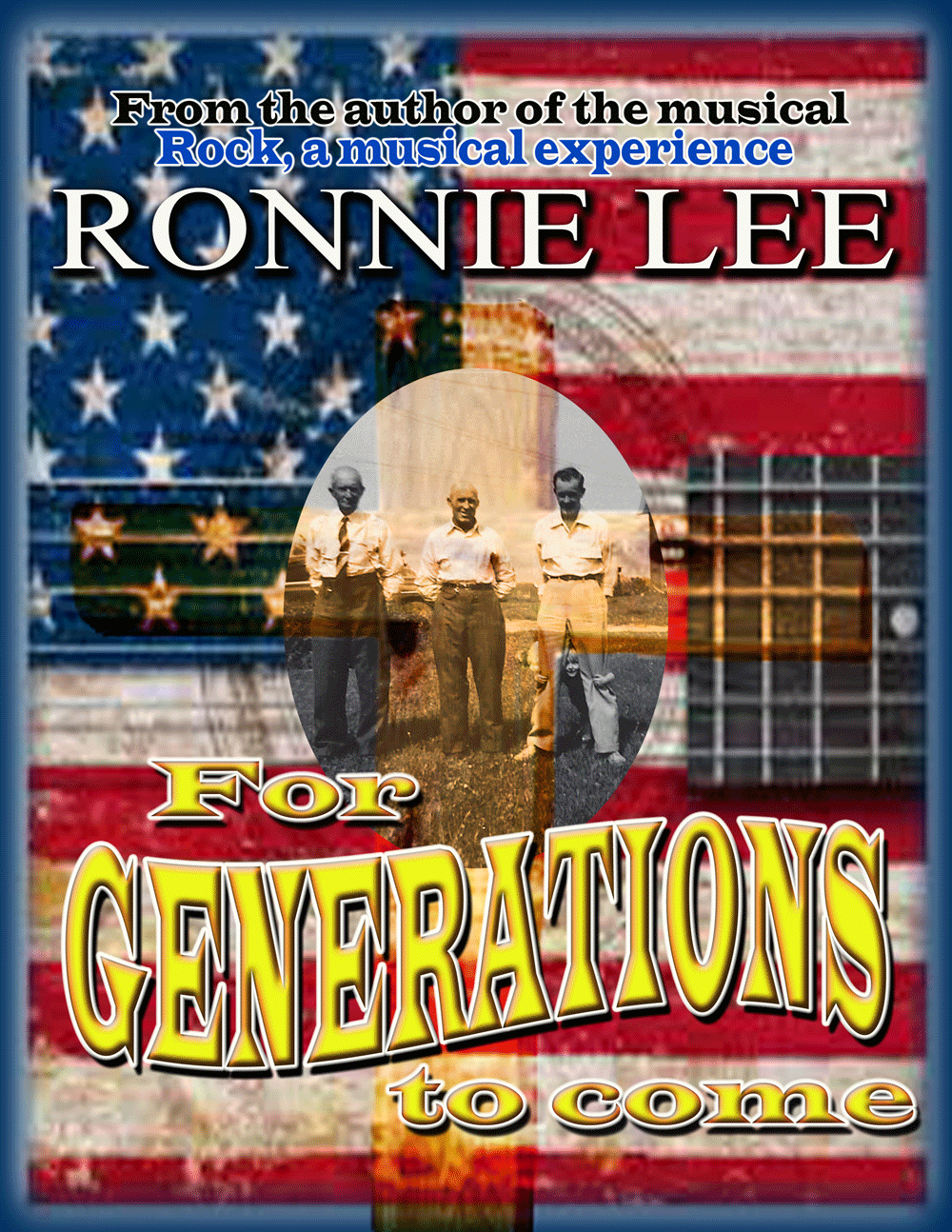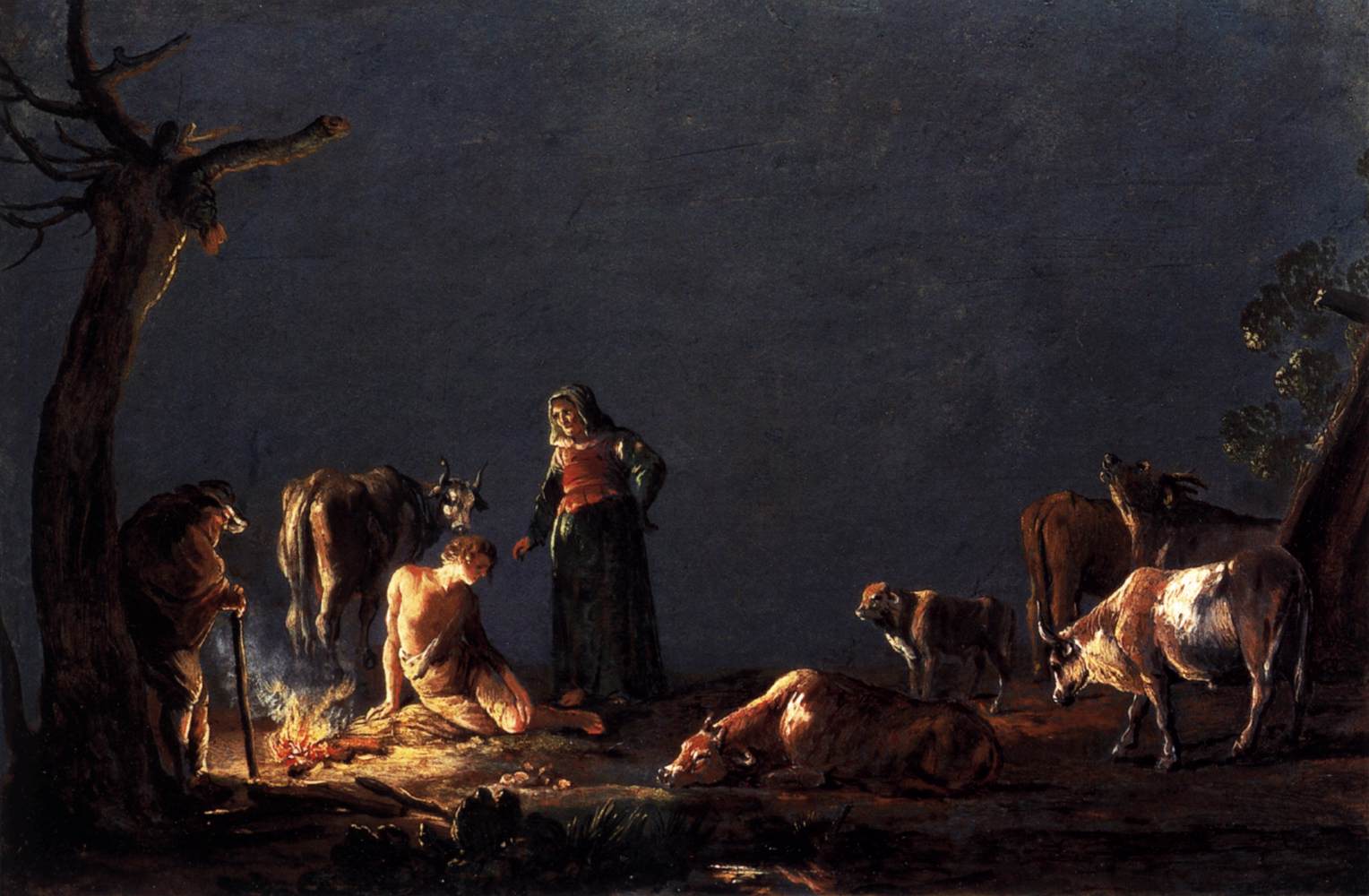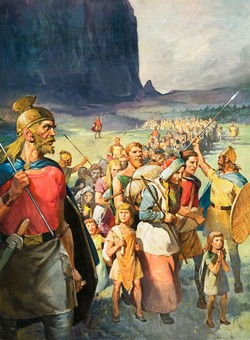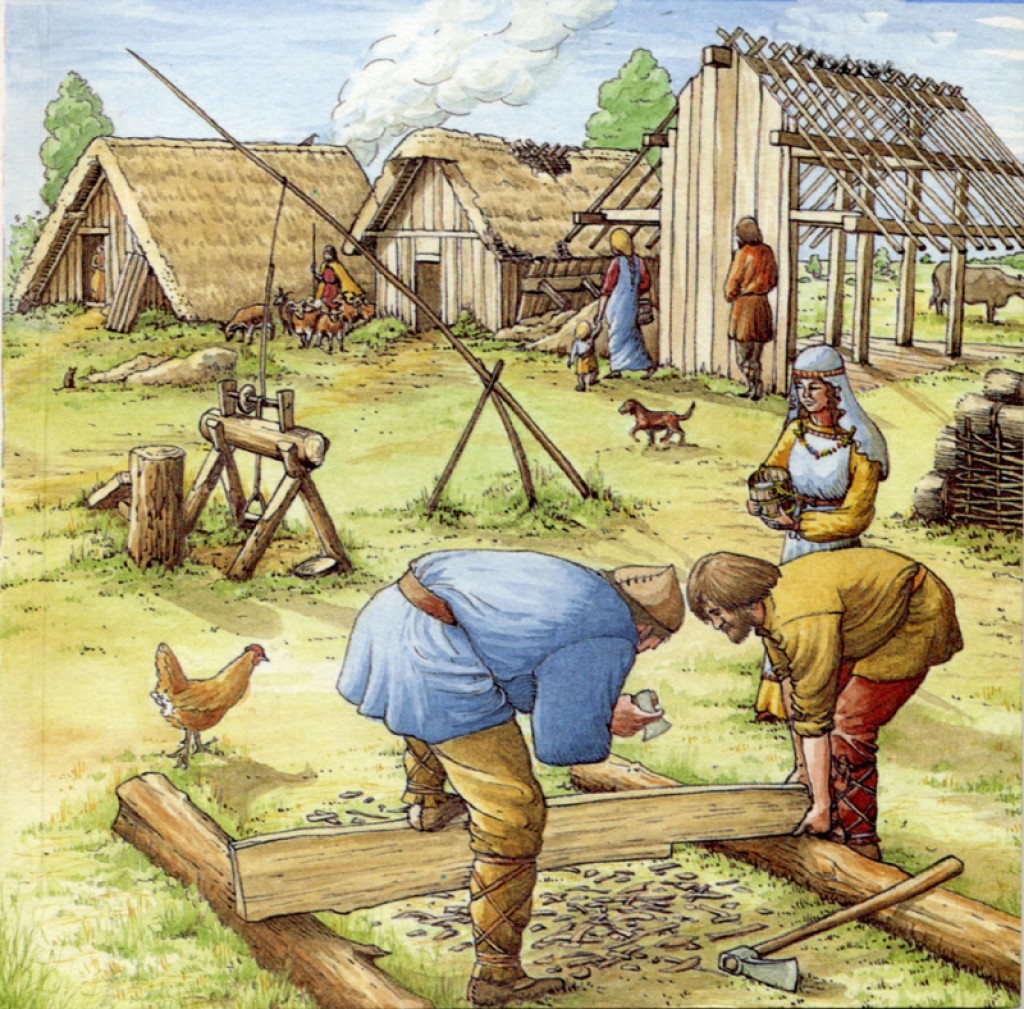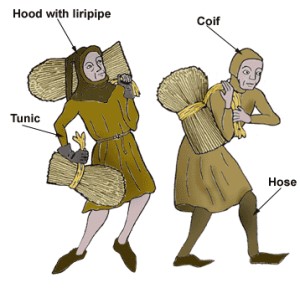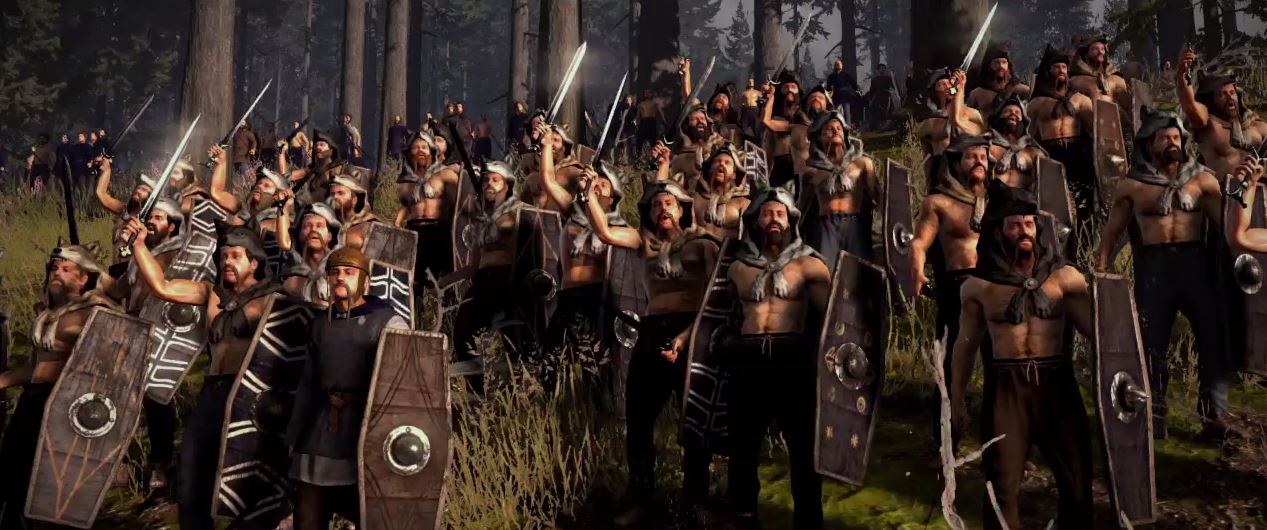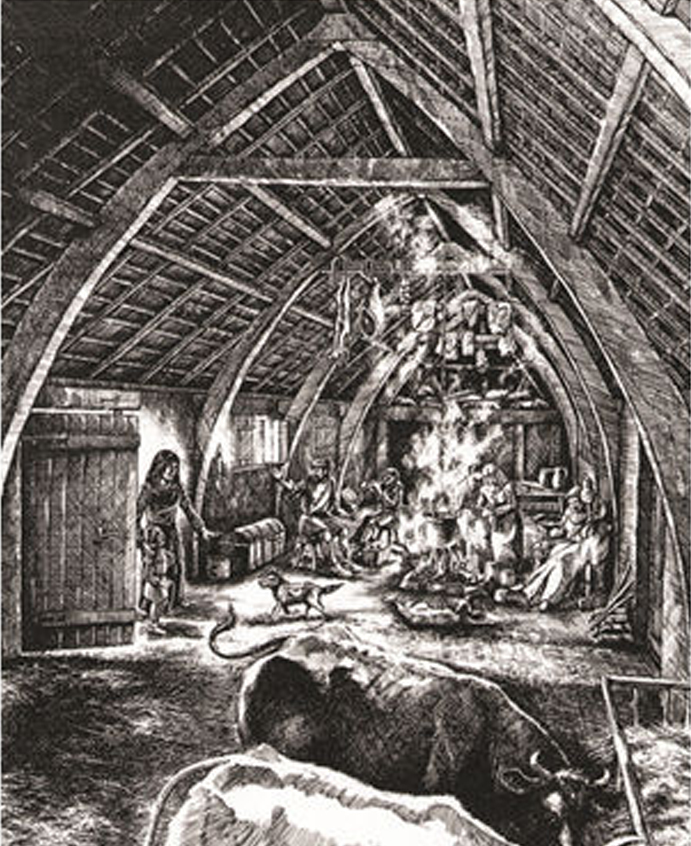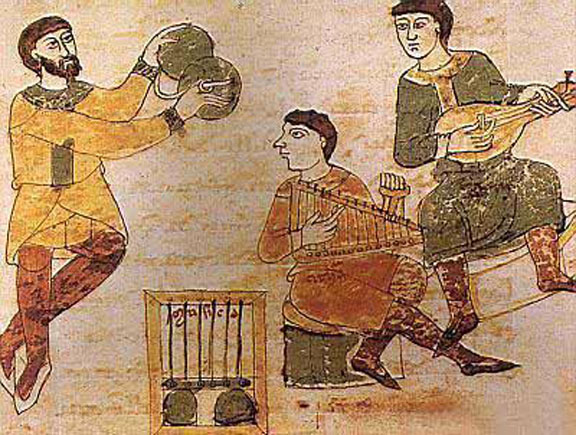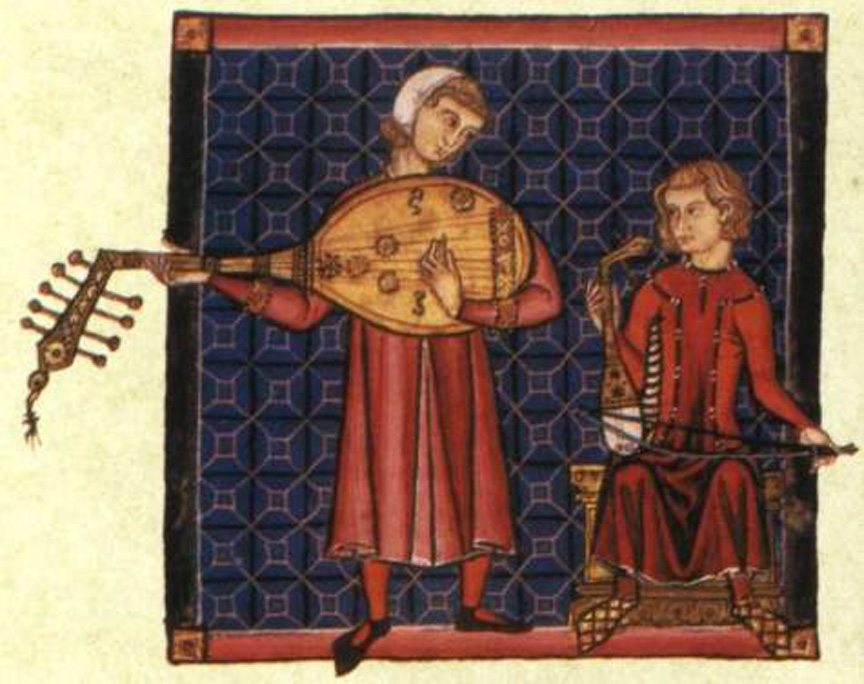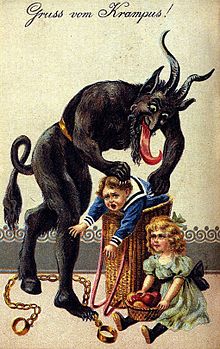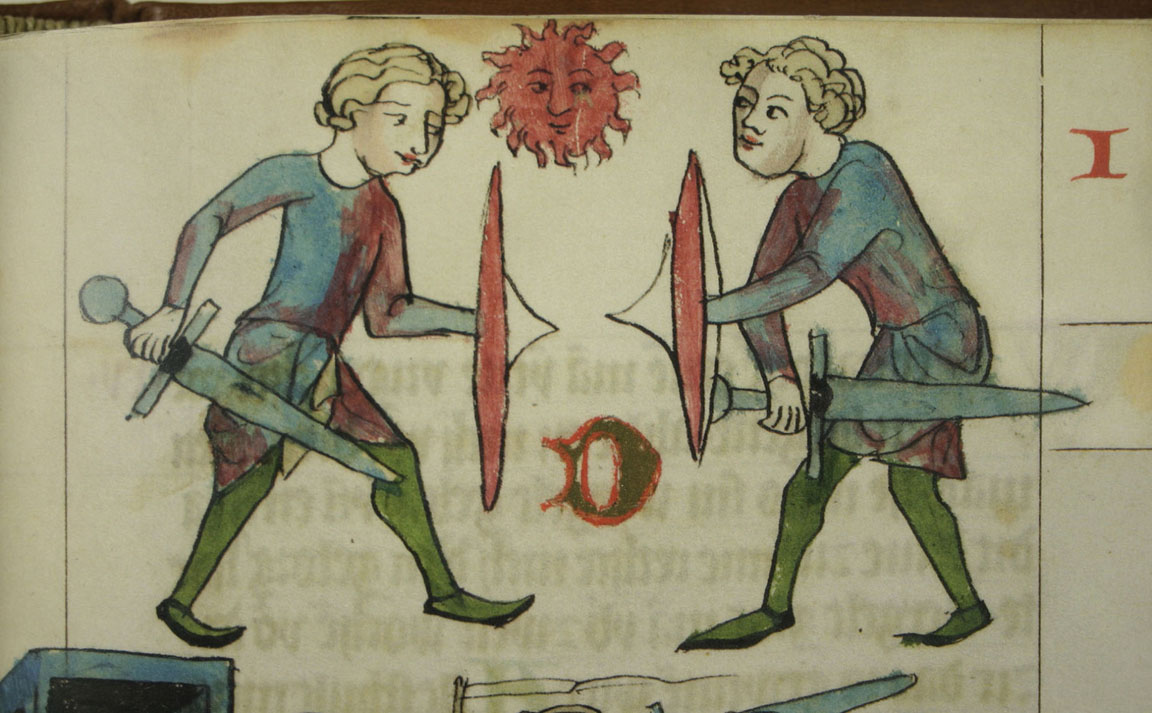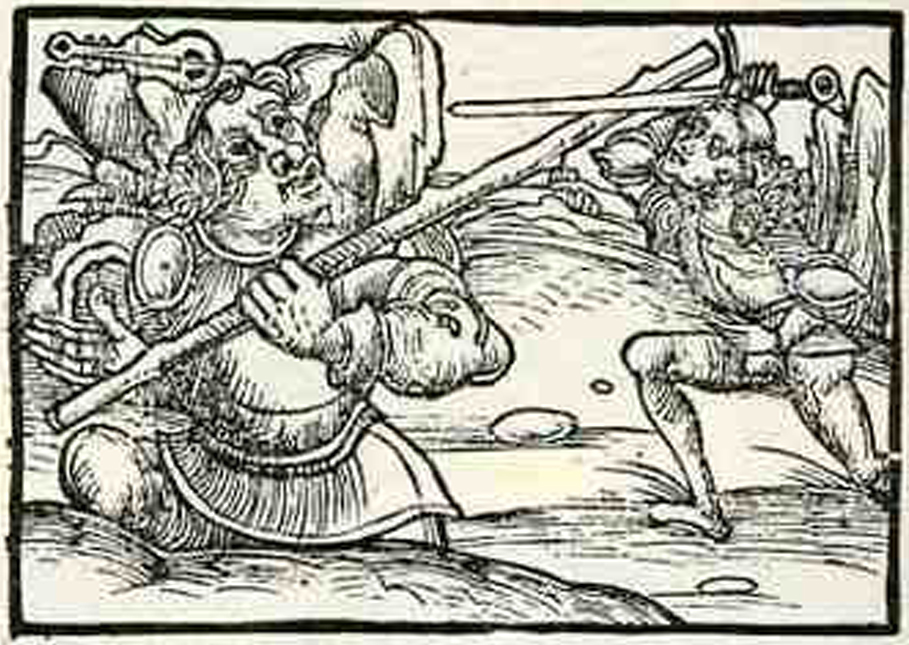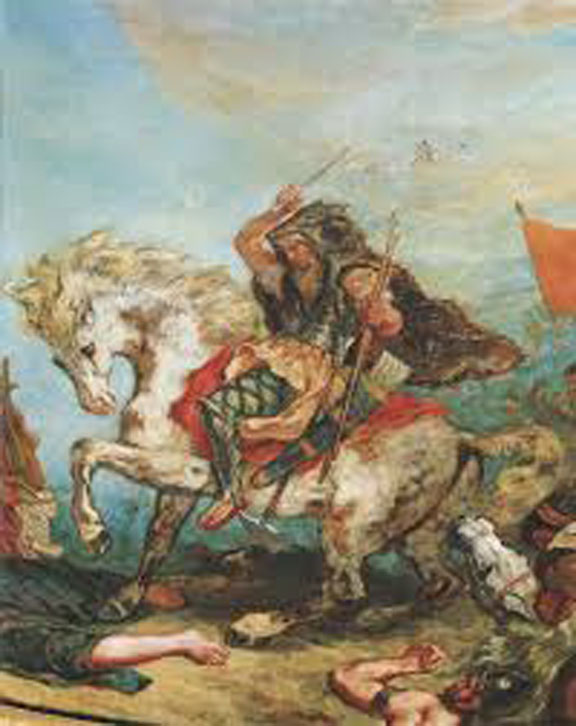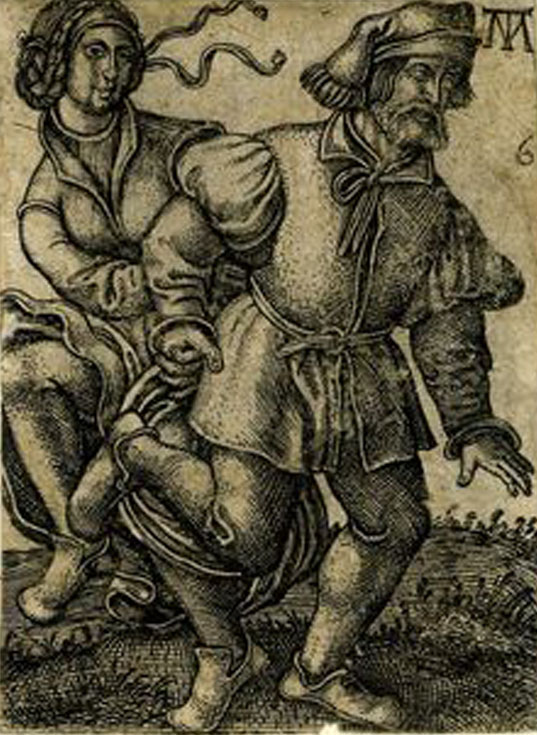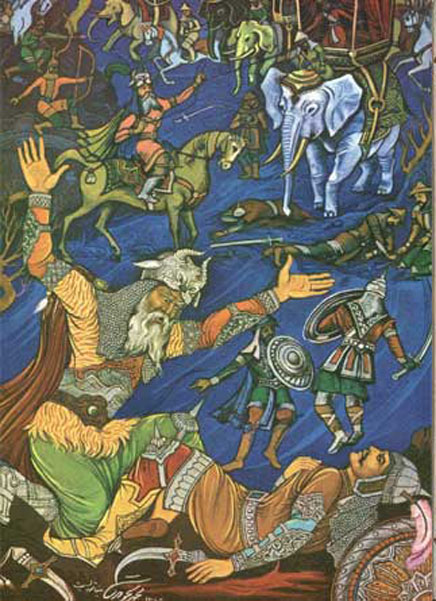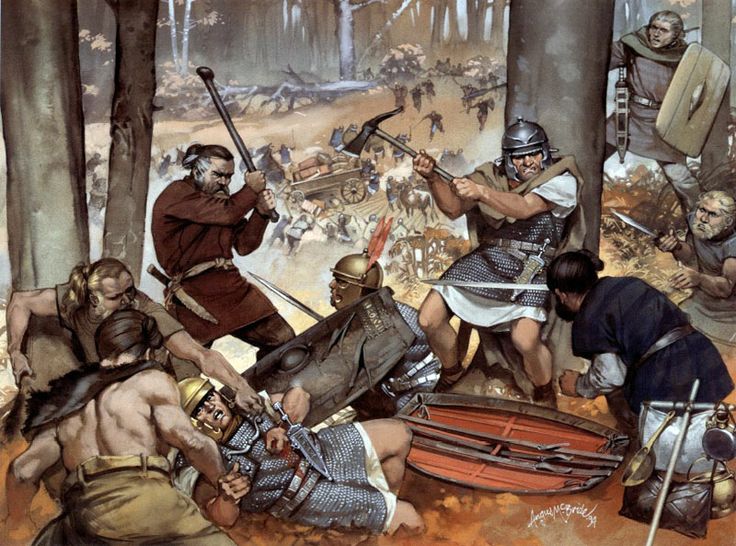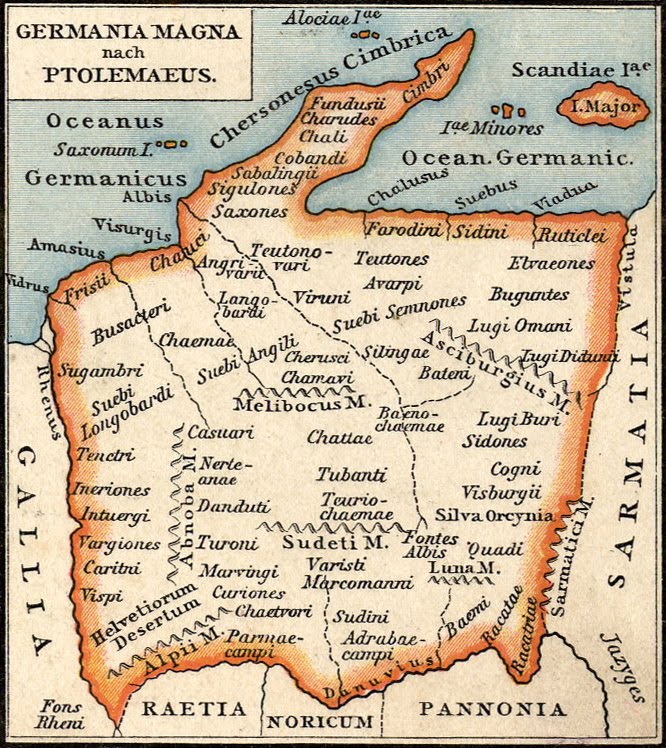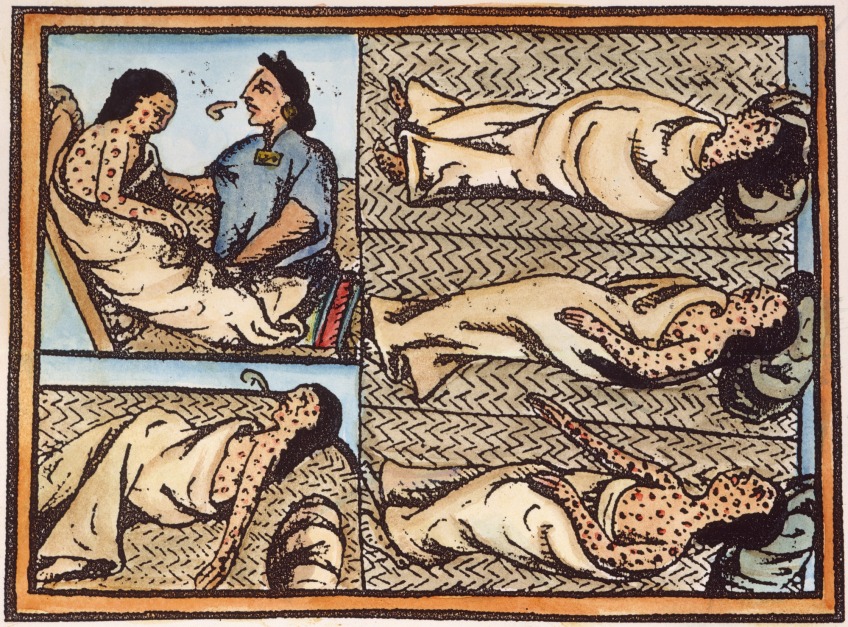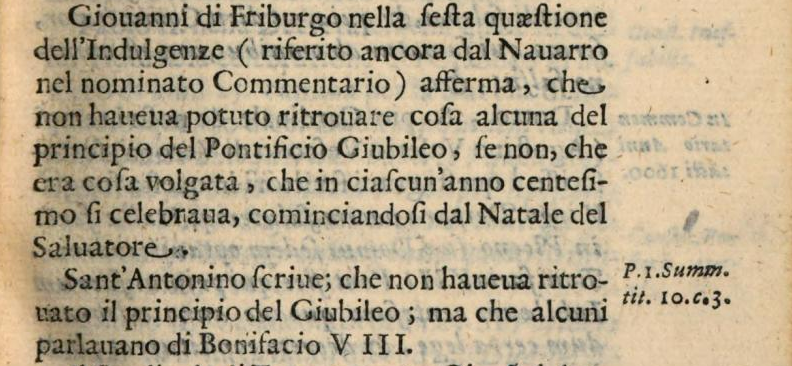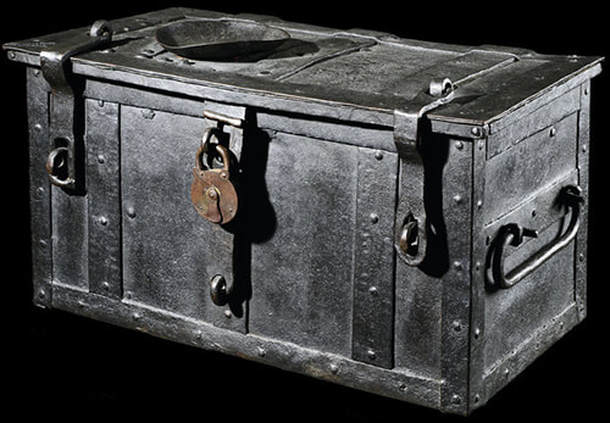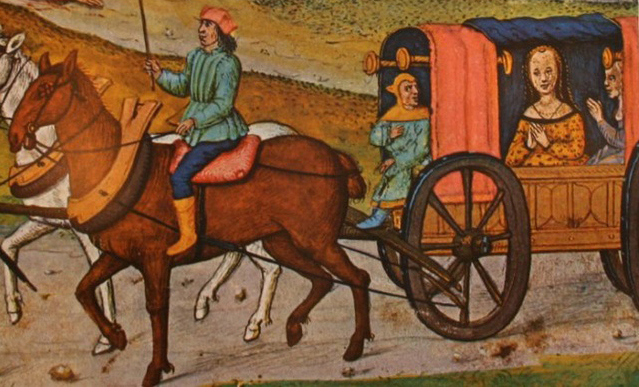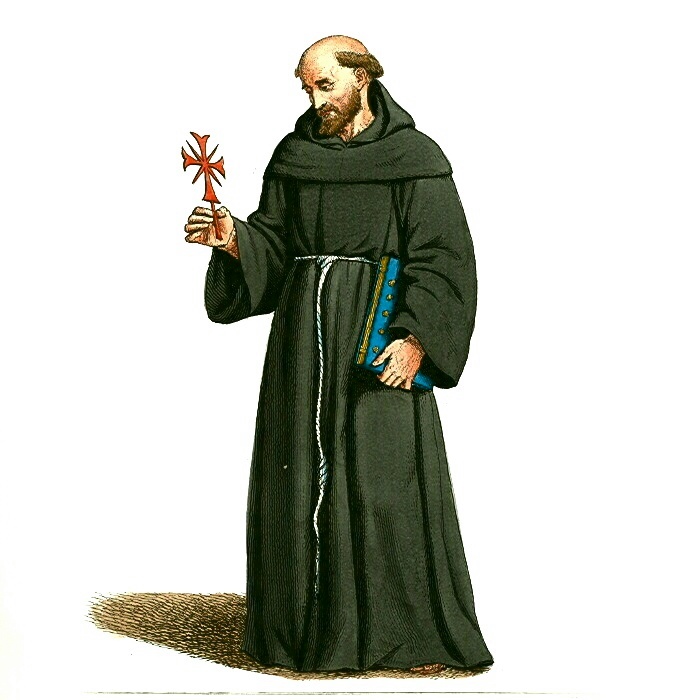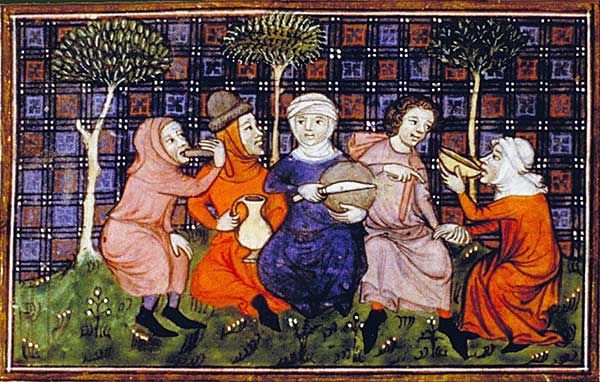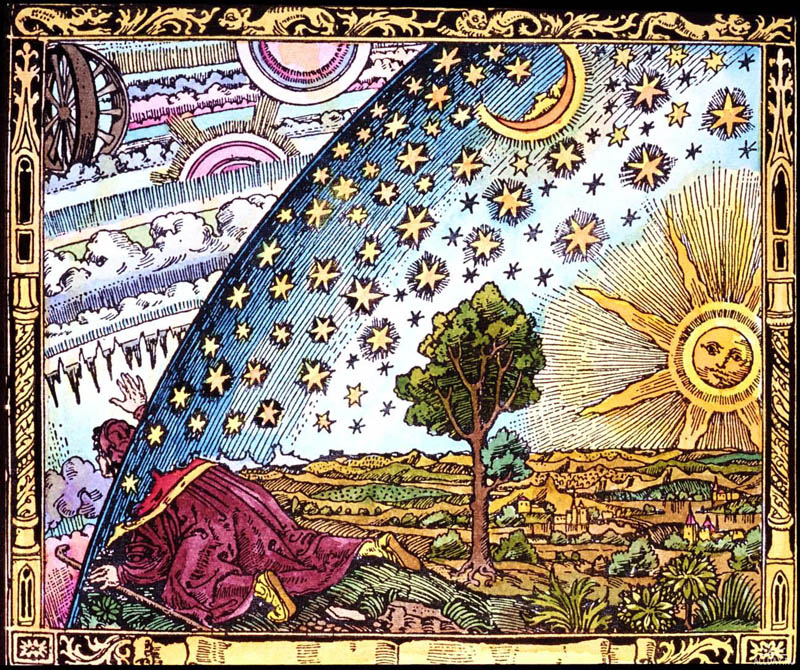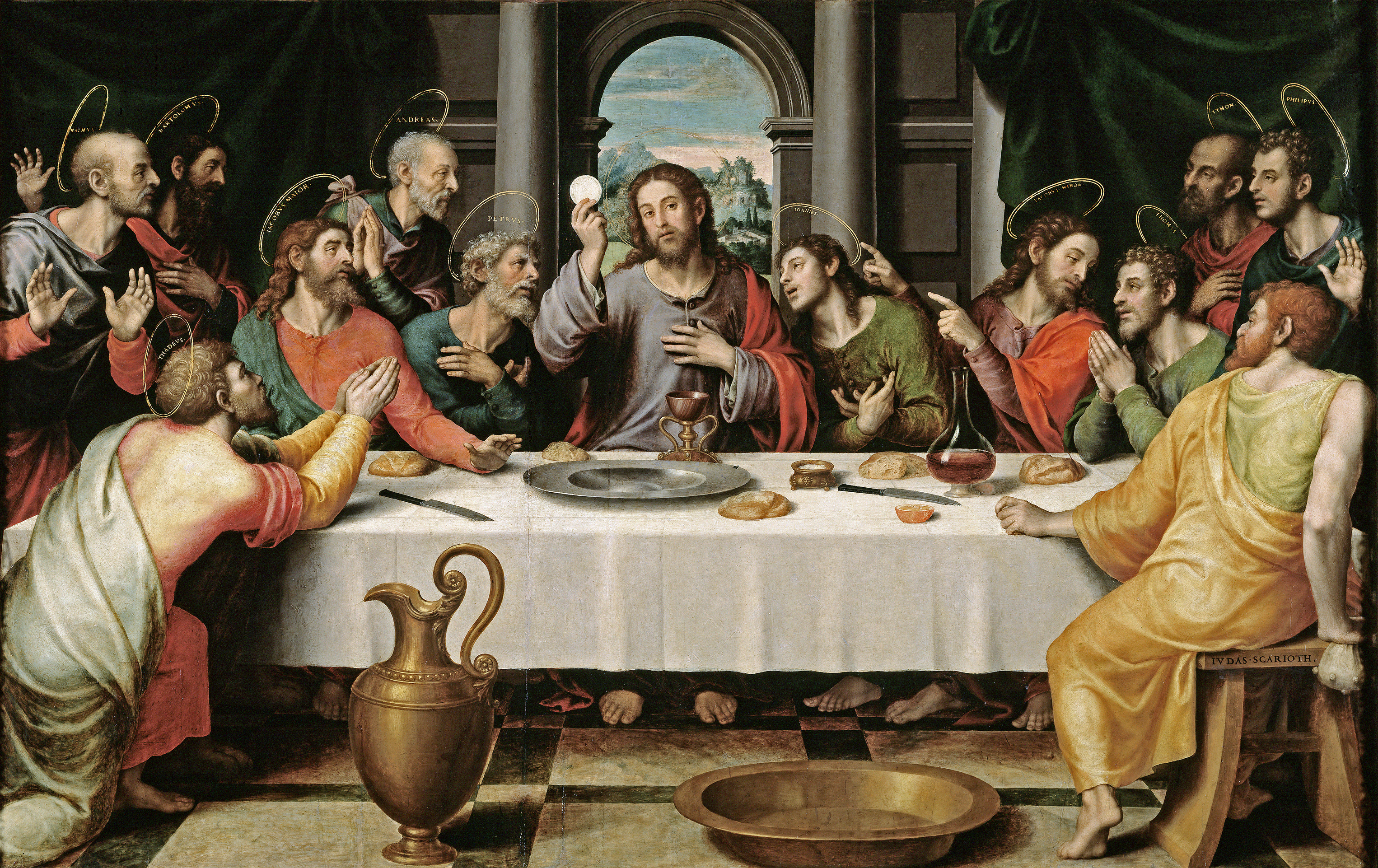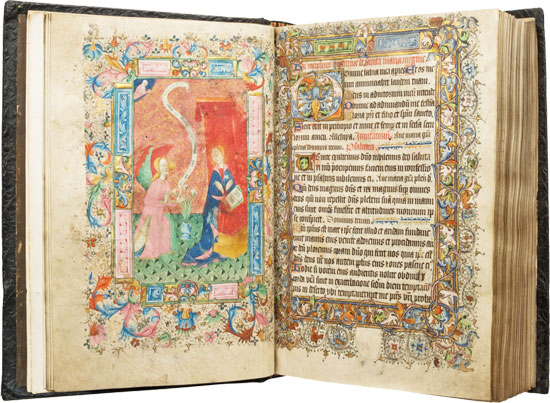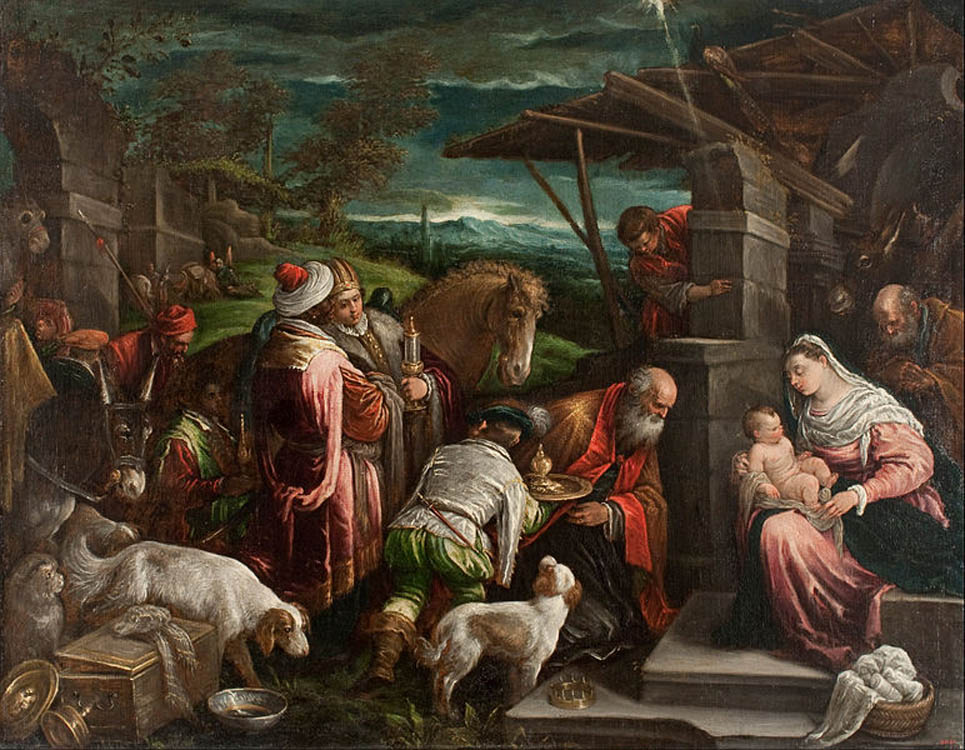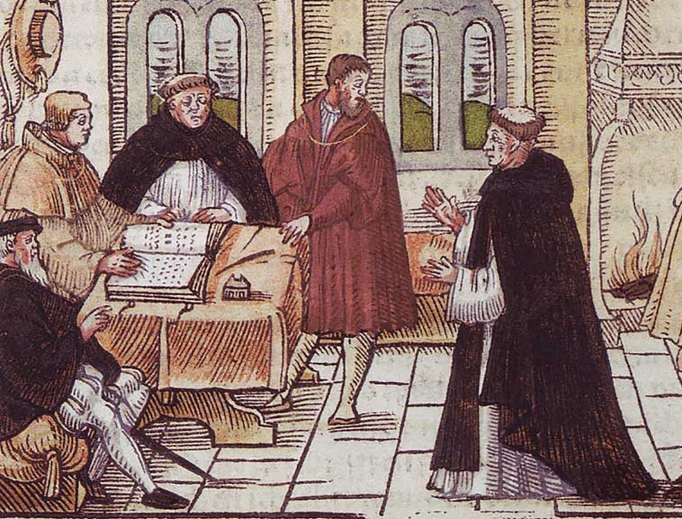1546 Hassan Germania “The haters or the angry”
the warmth of the fire
As the dawn announced a new day, the last man from the night watch stirred the coals of the fire. The sparks quickly rose and snapped above his head. This alarmed some of the people and children who were sleeping on the ground, but the guard quickly assured them that he was still there on watch. The man had stood alone against the dark all night, protecting not only his family, but his tribe and his community as well, armed with only the fire. His tribe had given him the name of Knauss, which means “the haughty person”.
“the haughty person”
His people were known as the Chatti, which means anger or hate, so they became known as the haters or the angry. The tribe had been involved in some sort of feud and had revolted against their oppressors, and thus earned their name. During the early years of the 16th century, an anti-Roman and anti-Papal movement that eventually led to the “Lutheran Revolt” erupted in the German lands of the Holy Roman Empire. This involved both the upper and lower classes including all the Chatti tribes. The followers came to be know as Protestant because of their, “protest against the Church.” This was the beginning of the religious movement known as the “Reformation”.
Martin Luther preaching while a boy nails the Ninety-Five Theses
Luther strongly disputed the claim that freedom from God’s punishment for sin could be purchased with money, proposing an academic discussion of the practice and efficacy of indulgences in his Ninety-Five Theses of 1517
the sale of indulgences
Luther taught that salvation and, subsequently, eternal life are not earned by good deeds but are received only as the free gift of God’s grace through the believer’s faith in Jesus Christ as redeemer from sin. The Chatti were one of the first tribes that heard his teachings about a better understanding of the Gospels for all German peoples. They quickly adopted his message but were slow to change old ways of thinking. His theology challenged the authority and office of the Pope by teaching that the Bible is the only source of divinely revealed knowledge from God. In the past the Chatti had been driven off good hunting land because it belonged the church. Now, it sounded to them someone was on their side. His translation of the Bible was printed into a common language instead of Latin so all could read it. Latin was only read by the church. This had a tremendous impact on both the church and all German peoples.
Luther Bible
This was a period when Germanic tribes were rapidly migrating into Western Europe and settling in different regions. Their influx was the decisive factor which contributed to the collapse of the declining Roman Empire. The Chatti were always on the move whether by force or choice. They were also being pushed by other Central Asian tribes such as the Huns. Centuries later, after having first met them, the English bestowed an Old English (Anglo-Saxon) expression on these people: they called them the Hatar, meaning “people of destruction.” The Chatti men, or the Hessi, lived on the edges of the forest.
people of peace and quiet
Despite their tribal reputation, they were a people of peace and quiet, unassuming, but conscientious in their line of toil. Nearly all of them tilled the soil, most of the younger men did all the hunting and fishing. The general practice among the Chatti was letting their hair and beard grow as soon as they have attained manhood. Not till they have slain a foe can they proclaim they have discharged their obligations of their birth and proved themselves worthy of their country and their parents.
nearly all of them tilled the soil
They cared little about social advancement but were content with clearing land to farm. However, to survive in these times, every man, woman and child had to be a jack-of-all-trades. Everyone worked in the fields and gathering wild foods like nuts, berries and eatable root plants. This took up most of every body’s time during the day light hours. Most activities were confined to around a fire a night like mending clothes, fixing tools, while telling each other stories. The Chatti people displayed much intelligence and sagacity. They were noted for their hearty frames and close-knit limbs. They were men of fierce countenances, and particularly vigorous with courage during battle.
they were men of fierce countenances
Peter’s father had proven to the tribe that he was very skilled in self-preservation. He always seemed to be at the front leading the community when it was time to make a move, either for safety from the weather and the elements, or to seek protection from the local lords and their influence over their enemies. He told his son Peter more than once, “don’t depend too much on anyone in this world because even your own shadow leaves you when you are in the darkness.” He displayed an instinct about survival, and especially a great awareness of his surroundings.
But Knauss is mostly remembered for his stories at the evening campfire, where his true talents blossomed in the light of the late-night flames. The warmth of the fire and the life he breathed into his heroic stories of their past captivated the tribe night after night, giving them a sense of security, a feeling of fellowship and a connection with their history.
the Chatti men
It was easy for Peter to remember the stories that his father had told by the campfire about the Chatti men and their tribe. There were many stories about bravery and courage. The poems and songs told how they promoted their heroic men to power, and how they obeyed those whom they had promoted. These men kept in their ranks, but always took advantage of their opportunities. The stories told the younger men to be leaders and to always check their impulses. Fortune was regarded as doubtful, but valor as unfailing. They were encouraged to gradually push out during the day and entrench themselves by night.
story time around the fire
The Chatti tribe was strengthened through the stories Knauss told that connected the present with their past and future. It was a nurturing act for the listener, who was connected to the storyteller through the story, as well as the storyteller was connected to the listeners. Knauss knew all the current tales and he was able to compose verses at a moment’s notice. He told Peter many times, “when the words come, they are merely empty shells without the music, The live as they are sung, for the words are the body and the music the spirit.” He could play many instruments, including the dulcimer, harp and lute. And he always had in his pocket a handmade flute that he played while walking. Peter also had one and they often played together.
the castanets, dulcimer, harp and lute
Oral storytelling has been around as long as human language. It originated from simple chants that people sang as they worked at daily tasks like grinding corn or sharpening tools. A traveling storyteller would learn various region’s stories while also gathering news to bring back with them. The exchanging of stories was a way that news spread across the land. The storytellers created myths to explain what they saw happening in nature. They assigned superhuman qualities to ordinary people creating the first super heroes.
working at daily tasks
Storytellers were also called troubadours or minstrels. They combined stories, poetry, music and dance to entertain their listeners. They became historians for the community. Their stories told the history of a culture that was handed down from generation to generation. The tribe gave Knauss great respect for his ability to tell a good tale.
Troubadours
Knauss told the story about Krampus the, “half-goat, half-demon”, who during the Christmas season, punished children who had misbehaved. This was the opposite character of Saint Nicholas who rewarded the well-behaved children with gifts.
Krampus
Peter had a favorite story he liked to hear, and he requested it often. It was one of the earliest German folktales and it told the story of, Hildebrand and Hadubrand, two warriors that meet and prepared for combat. Knauss always began the story, “Song of Hildebrand”, like this as he sang.
“I heard tell
That warriors met in single combat
Hildebrand and Hadubrand between two armies
Son and father prepared their armor
Made ready their battle garments girded on their swords
The warriors, over their ring mail when they rode to battle.”
song of Hildebrand
Knauss went on to tell a story about the tragic encounter in battle between a father and son who fail to recognize each other. “Two warriors met on a battlefield, and they were the champions of their two armies.” He stood tall and walked slowly around the back of each of his listeners as he kept on speaking. “Now the older man, Hildebrand, asked for the identity of his opponent and where did he come from.” Knauss revealed that Hadubrad did not know his father, because he had fled eastward leaving behind a wife and small child. He believed his father to be dead.
the battle
Knauss acted out each character’s part and continued, “Hildebrand told him that he would never fight such a close kinsman and offers him gold arm-rings that he had received as a gift from the Lord of the Huns”. Everyone in the tribe recognized this as a reference to, Attila the Hun. Knauss whispered when he told the listeners, “this was Hildebrands way of trying to show that he was his father”. Knauss became quite angry as he said, “Hadubrand rejected the arm-ring and he accused Hildebrand of trying to trick him. He told him once again that his father is dead”.
Attila the Hun
Knauss took a little pause before he continued, “Hildebrand told Hadubrand that his good armor shows he has never been in combat. But he accepted his fate, feeling that it would be cowardly to refuse battle, he challenged Hadubrand to win his armor”. Knauss said, “Hildebrand’s shield bears paintings of the warriors he had killed in battle”. Jumping around Knauss fought an imaginary war with himself, playing both sides. “The two warriors throw spears at each other. Then they close in for combat and they fight until their shields are destroyed.”
acting out a story
Now at this point, Knauss would take the storyline in different directions. The listeners were always ready to hear which way he would take it this time. Oral storytelling was only limited to the imagination of the story teller. Each teller would incorporate their own personality and may choose to add characters into the story. There could be numerous variations of the same story. Each time Peter heard his father tell this story the ending was different. Sometimes, he would not finish the story at all and leave the listener hanging on until the next night for his ending to the tale. The flexibility of oral storytelling allowed Knauss to mold the tale according to the needs of the audience, and he took full advantage of this each time he told it.
the dishonorable act
Sometimes Knauss would end the story abruptly by saying, “then Hildebrand had no choice but to kill his son after the dishonorable act of standing against him in battle. This was an act of treachery”. Or he might have a different ending like, “Hildebrand spared his son’s life and took him in his arms”. Knauss made the point, “how could a father and son fail to know each other when they meet”. He took a long look at everyone right in the eye and told them, “families have to stay close-nit, like a fine worm blanket that holds together when treated ruff”.
Knauss was a huge man of the tribe, but he became a little child full of laughter around the children. His personality added to the characters in the story. He enhanced each tale with the addition of anything he could pick up and use as a visual tool for a specific action. His listeners were physically close together, often seated in a circle, while he was telling the story. The people became not only psychically close, but they developed a connection to each other through this communal tradition.
His listeners experienced the creative process taking place in their presence. They felt like part of that creative process, and Knauss held a personal bond with all of them. Each time Knauss told these stories he was passing on the oral history that made the tribe who they were. He knew some young person listening to him would, pick up the torch when he was ready to pass it on, and become the next generation’s voice from the past.
Early one morning, as fog covered the valley floor, Knauss stepped out of the lush green hills of Hassan, Germania, with his young son, Peter, and cautiously surveyed the countryside below. The mist began to disperse with the hint of a light breeze, while the birds were announcing their presence in the treetops. They could hear the scampering of small animals all around them, as the forest came alive.
early morning European sunrise
He paused for a moment, then went down on one knee and put his arm around his young son. He tried to explain to Peter that every day brought new opportunities and dangers, and you had to be able to recognize which one you were dealing with at any moment. He pointed out to Peter how the birds were announcing to the rest of the forest that it was safe for them to start their day. He pointed out how all the life in the forest lived and died for the betterment of all. And that was the same foundation for the success of the tribe.
He was very uneasy about entering this valley, which he had intentionally avoided many times before. This luscious green valley held a dark truth known to everyone who traveled through there. For this valley was a mass Roman cemetery: all that was left of three legions of Roman soldiers that were destroyed by the Germanic tribes several years earlier.
battle of the Teutoburg Forest, 9 AD
The disaster was a tremendous blow to Rome’s plans for expansion into Germania: something from which they never entirely recovered. The Roman’s stay was short-lived. They were massacred by General Germanicus at the start of his invasion of northern Germany and an area of 50 miles of Roman territory was laid waste. Much of this land was later occupied by the Chatti and their Hessian descendants like Knauss and Peter.
three legions of Roman soldiers that were destroyed by the Germania tribes
The grave-site was so massive that people were continuously digging through the ruins to find bits of metal which could be used for tools. Doing so, they would uncover the gruesome ways that the men had died. Some of the bodies had been so well preserved that even the leather sandals that they wore could be admired as a more advanced form of footwear than the Germans were currently wearing on their feet.
It was not only the large Roman ruins in stone that were left as a reminder that a greater civilization had come before them, but the graves of their past were very present in the fields from which they cultivated a meager living. Having no other choice than to use land that was already cleared, these early farmers were the first untrained archaeologists to document and pass on what had happened in their homeland.
old world German map
To the tribe, his son was known as Peter Lee, because of the legions left on his face after having survived the smallpox epidemic that had passed thru his village. Peter’s mother had died in childbirth and she was infected with smallpox which she had passed on to Peter. So unfortunately, Peter carried on his face the reminder of his mother’s infection and what had probably helped contribute to her death.
smallpox disease
Peter Lee admired and took after his father who was the best fisherman in the tribe. He knew where all the dark deep water was in all the local streams. He knew the secret of only fishing upstream to catch the Brook and Brownies from the cold water. Peter’s father had instilled in him the love of fishing, and the satisfaction of providing for his family.
5 loaves and 2 fish
Peter’s father also told him the stories of Jesus and the fisherman. Knauss had seen the inside of the great local cathedrals, and admired the frescoes on the walls. He understood the story of Jesus dividing the fishes and the loaves between the people. The idea of a free meal was almost beyond people’s concept at that time.
feeding the five thousand
Peter’s father was very concerned with being able to earn money to give to the church for the “Jubilee Indulgence,” to help get Peter’s mother out of purgatory. Peter’s family had been taught by the church that his mother was a sinner and that was why she had contracted the disease of smallpox. She could only be saved if someone paid her way out.
the German text reads, “In the authority of all the saints, and in compassion towards you,
I absolve you from all sins and misdeeds, and remit all punishment for ten days.”
The sale of indulgences was an abuse that had crept into the Catholic Church during the late 15th century and was a spark of the Lutheran Revolt. It was first intended to defray the cost of the Crusades, but later was used to replenish the Papal treasury. This practice popularly epitomized Church corruption. The notion of paying money to receive Church forgiveness did not strike the average person as wrong. This “Jubilee Indulgence,” to redeem a dead loved one, had the Pope’s authorization and financed the construction of St. Peter’s Cathedral in Rome, known as the Vatican.
16th century Indulgence chest
Because the Archbishop of Mainz (a town in Germany not far from where Peter and Knauss resided) had large debts, the Church decided to sell the Jubilee Indulgence in his area. The proceeds were to be split between the Archbishop and the bank to whom he owed money, and the Pope himself. To make matters worse, the Dominican friar launched an advertising campaign that included the slogan, “As soon as coin in coffer rings, the soul from Purgatory springs.” This little rhyme is what Knauss had heard all his life.
There was a road that led down the hill winding through the valley, but it was not always safe to travel on this path. It was well-known that travelers could be waylaid by someone jumping out at them from behind a tree as their backs were turned to them, providing little defense. It was not uncommon to see the odd corpse from one of these attacks, left behind alongside the road, as one traveled through this land.
Knauss now figured that it was late enough in the day that it may be a little safer venturing down the path that led into the valley below. But it wasn’t long before he and Peter could hear the clatter of approaching hooves and the rattle and squeak of wagon wheels. They knew who was coming. There was only one group of people that had this form of transportation, the wealthy elite. Maybe somebody from the clergy, or even royalty, was about to pass by. Quickly, he encouraged Peter to step back into the brush until the travelers had passed.
three in a wagon
As the coach bounded down the trail, the peace and quiet of the forest was interrupted. It was as if all present were attentive to the new arrivals in the forest. The coach became visible coming through the brush. A powerful and magnificent steed was doing his best to keep up with the crack of the whip by the driver. Dust rolled out from underneath the spinning wheels and trailed behind the carriage like puffs of smoke. The coach was open at the top and you could see that behind the driver were seated three passengers, all of whom seemed to be enjoying the very bumpy and dusty ride. It was the passengers who were encouraging the driver to go faster.
As they approached, both Peter and Knauss could identify that one of the passengers was a Friar, dressed in a long robe that was tied at the waist with a cord. He was basically a travelling preacher who worked for the Church. They were very poor and lived a simple and humble life. Friars were sent on important religious missions. He wore beads around his neck, with a small cross that bounced up and down with the rhythm of the bumps in the road. He was laughing with great excitement and his jolliness was contagious. The two men watching from the bushes shared a giggle between them. A man and a lady sat in the carriage with their back towards the driver, and their faces only came into view after they had passed.
Medieval Priest, Friar, or Monk
They both could tell by the passengers’ clean faces and clothing that they were successful in life. The lady was humbly dressed, but her clothing was all clean. Peter and Knauss could see that her hair had been combed and styled: pinned-up in some way. She was not dressed like the women in Peter’s tribe, yet it was not the clothing that brought her to his attention: it was how clean the two of them were.
a medieval woman
As the coach passed, the man by happenstance looked directly into the bushes and saw Peter’s eyes gazing back at him. Immediately he cried to the driver, “Whoa! Stop here, my good man.” The driver pulled back on the reins and the coach slid to a stop, just before crossing the Roman stone bridge that arched over the stream.
old Roman bridge
The man calmly stepped out of the coach and tried to encourage the two men to come forth unto him. By this time the lady and the Friar had also exited the coach, and were equally encouraging them to join their company. The normal and safe thing to do would be to avoid any contact with strangers, but found in the company of a Friar, Peter and Knauss felt safe enough to approach them.
The man introduced himself, “good day to you brothers, my name is Johann (yo-han) feel free to call me Hans and this is my wife Elisabeth. I am the eldest of six children born to my father Martin and my mother Katharina”. Johann motioned once again for the men to join them. He encouraged them to feel safe, “we mean you no harm, come join us in a communal meal.”
Martin Luther and family
The man took a blanket from the carriage, spread it on the ground and invited the two of them to join them in a, “table fellowship.” The lady opened the basket and took out a loaf of bread, a bottle wine and a glass cup. Peter’s eyes were fascinated with the cup; he had only seen cups and bowls made of wood. You could see the lady’s hand and fingers right through this cup, and he was amazed. The lady took the bottle of wine and filled the cup, then set it beside the bread on the blanket.
their first communion
As the table was being set Johann said, “I was twenty years old when father died in 1546”. Johann told the two men he had a letter from him that he would like to share with them. Neither Knauss or Peter could not read and they told him so. There were only a few signs or letters they could recognize but they were always eager and ready to listen to anyone that could. “Letters are sings of things, they are the symbols of words.” He went on to say, “the power of letters is so great that without a voice they speak to us the words of the absent; for they introduce words by the eye, not by the ear.” Johann had their complete attention and he knew it, so he took advantage of this time to witness to them.
Johann pulled a letter from a pouch he kept in his shirt. It was a well-worn document that had obviously been pulled from that pouch and read many times before. Knauss and Peter recognized that this letter was given great care as it was unfolded. Everyone became still and reverent waiting for Johann to read, he began, “Grace and peace in Christ”! Johann skipped over the personal stuff in the letter and got right to a story that his father Martin had written about.
Johann said that his father wrote him this, “I know a pretty, lovely, pleasant garden, where many children go. They wear golden coats and gather nice apples, pears, cherries, and plums from under the trees. They sing, jump, and are merry. They also have pretty little horses with golden bridles and silver saddles. I asked the owner of the garden: “Whose children are these?” He said: “These are the children who like to pray, study, and be pious.”
medieval story of a garden
Then Martin said: “My dear sir, I also have a son, his name is Johann. Might he not come into the garden, too, so that he might also eat such lovely apples and pears, ride such fine horses, and play with these children?” Then the owner of the garden answered him: “If he likes to pray, study, and be pious, then he, too, may enter the garden”.
Martin Luther went on to tell his son in the letter that, “All who come will also get whistles and drums, lutes, and all kinds of stringed instruments. They will also dance and shoot with small crossbows.” Then the owner showed Martin a lovely lawn, all ready for dancing, where golden whistles and drums and fine silver crossbows hung. But it was still early, so the children hadn’t eaten yet. Martin said to the owner, “ah, dear Sir, I must hurry off and write all this to my dear son Johann, so that he will be sure to study diligently, pray well, and be pious, so that he too may come into this garden.” The owner said to him, “yes he also can enter this garden. Now, go and write him thus.”
a view into heaven
Johann did not have to look at the letter any longer, he knew from memory what was written in the text. His voice was soft and gentle as he spoke his father’s words, “My dear son, make sure to study God’s word and pray. Witness to all that cross your path, so that they may study and pray too. That way, all will get into the garden together. May you be herewith commended to God. Your dear father, Martinus Luther.” Johann showed the same respect given to the document as it was re-folded and gently put back into the pouch, which he safely tucked back in his shirt.
Then Johann took the bread and broke it into pieces and shared it with all of them, including the driver of the coach. He said a small prayer, “Our precious heavenly father, we know to be a Christian without prayer is no more possible than to be alive without breathing. I have held many things in my hands, and I have lost them all; but whatever I have placed in God’s hands, that I still possess. I know whatever your heart clings to and confides in, that is really your God. Now bless us this day, amen”.
the Lord’s supper
Johann told them that the bread represented the breaking of Jesus’ body at the cross and His blood was shed in our behalf. “He bore our sins and through His sacrifice we have complete redemption and total deliverance from the works of Satan”.
Then again, after a small prayer, he took the cup and shared it amongst them, saying, “This is my blood, do this in remembrance of me.” Peter was not too sure about any meal that didn’t make him full, but he did understand the special meaning of what the man and lady had shared with them. He felt the holiness of the moment. Johann finished saying, “as new creations in Christ Jesus, we realize our freedom had been bought and paid for. We are forgiven of our sins. We are redeemed, and we give thanks for it all in the name of Jesus.”
Knauss asked the question, “how can you have such faith in someone you cannot see”. Johann began his answer by saying, “the eye through which I see God is the same eye through which God sees me; my eye and God’s eye are one eye, one seeing one knowing one love.” He went on to say, “faith is a living, daring confidence in God’s grace, so sure and certain that a man could stake his life on it a thousand times. I know not the way God leads me, but well do I know my guide”. He went on further to answer him, “the Bible is alive, it speaks to me. It has feet and it runs after me. It has hands and it lays hold of me. For He is the man to whom it all applies, every bit of it. If you want to interpret it well and confidently, set Christ before you. Ask Him to open your eyes to see His will for you.”
medieval bible
Then the Friar began to speak, “to find Christ in such poverty, and what his swaddling clothes and manger signify, are explained this way. His poverty teaches how we should find him in our neighbors, the lowliest and the most needy. His swaddling clothes are the holy scriptures. Christ alone may stand before us.” He told them that Martin Luther, Johann’s father, was the leader of the Protestant Reformation. He taught that, “salvation and, subsequently, eternal life are not earned by good deeds. But, he said, we received it only as a free gift of God’s grace through the believer’s faith in Jesus Christ as Redeemer from sin.”
the first Christmas
All this time Peter was thinking to himself, “when you don’t know what to say just listen, and let somebody else do the talking,” so he listened to these two men of God. The message they spoke about was a deep well of inspiration to Peter. He was receiving the living water of the Gospel, his thirst was great, and his satisfaction was full. He now had a personal knowledge of the truth in Christ.
The Friar stood up and proclaimed, “Luther’s theology challenged the authority and office of the Pope by teaching that the Bible is the only source of divinely revealed knowledge from God.” Then the Friar let them know he was not happy, “The Church is not only responsible for what they say, but also for what they do not say. The truth has been kept from the common man. And I consider all the baptized Christians to be of a holy priesthood.” Then the Friar said softly to himself, but loud enough still for all to hear, “The world is divided into men who have wit and no religion and men who have religion and no wit.”
The Protestant Reformation
Joining the Friar, Johann rose to his feet and looked upward toward the sky. Watching the clouds roll by he said, “a Christian man is the most free lord of all, and subject to none. A Christian man is the most dutiful servant of all, and subject to everyone.”
The Friar went on to say that, “those who identify with these, and all of Luther’s wider teachings, are called Lutherans. Luther himself insisted on using the term Christian or evangelical as the only acceptable names for individuals who profess Christ.” The Friar said, “we are the body of Christ. The church is not the building but the people who built it.” This was the first time that Peter or Knauss had ever heard the name Christian.
The Friar re-explained to them, and tried to reassure Knauss, that indulgences are not necessary. “He has already paid the full price of salvation for all,” he told him. Even so, Peter’s father was far more zealous for the tradition of his ancestors. That’s why Knauss clung to this belief in indulgences.
Some of what the Friar told them was above his head, and only much later in life did Peter understand the spiritual significance of that moment. Peter was aware that these clergy people were not as arrogant as some of the other clergy that he seen in the past. The man and woman were not afraid to give Peter and his father a hug as they departed.
Word count: 5,539
>>Click here<<<
